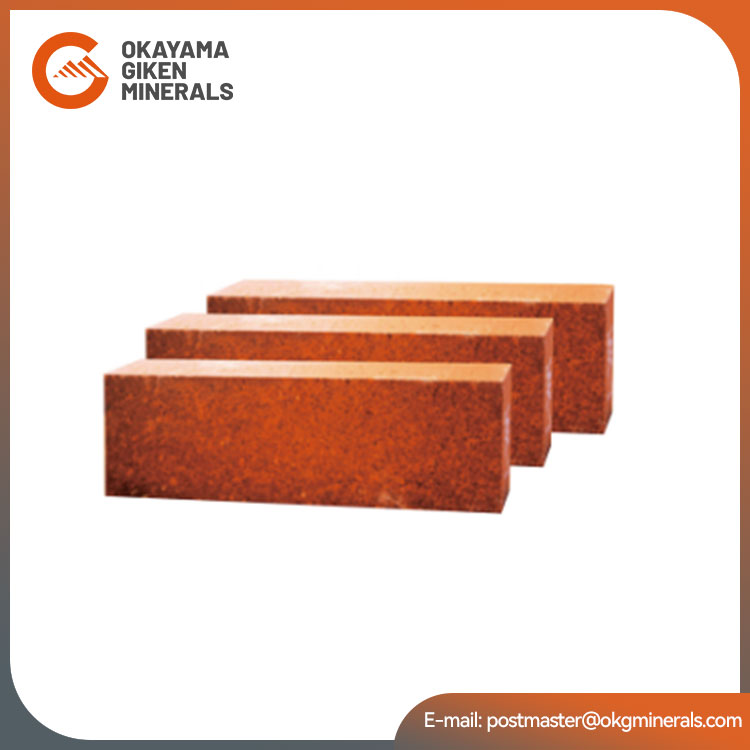Why Choose Magnesite Brick for High-Temperature Applications?
2025-08-27
When it comes to extreme heat environments, the choice of refractory material directly determines the efficiency, durability, and overall performance of industrial furnaces and kilns. Among various refractory options, Magnesite Bricks have become a preferred solution across industries such as steelmaking, non-ferrous metallurgy, cement production, and glass manufacturing. Their superior thermal resistance, strong mechanical strength, and excellent chemical stability make them indispensable for applications where temperature thresholds regularly exceed 1500°C.
What Are Magnesite Bricks and Why Are They Used?
Magnesite Bricks are refractory bricks primarily composed of magnesium oxide (MgO), obtained by calcining natural magnesite or sea magnesia. With MgO content ranging between 85% and 97%, these bricks exhibit exceptional refractoriness and stability at high temperatures, making them ideal for lining industrial furnaces, converters, kilns, and incinerators.
Key Benefits of Magnesite Bricks
-
Exceptional Heat Resistance – Magnesite Bricks can withstand temperatures up to 1800°C, making them suitable for extreme thermal environments.
-
High Corrosion Resistance – Excellent resistance against basic slags and alkalis makes them popular in steelmaking and non-ferrous smelting.
-
Low Thermal Conductivity – Ensures minimal heat loss, improving energy efficiency and reducing operational costs.
-
Dimensional Stability – Maintains structural integrity even under rapid temperature fluctuations.
-
Longevity and Cost-Effectiveness – Reduced brick replacement frequency due to outstanding durability and mechanical strength.
Typical Industrial Applications
| Industry | Application | Temperature Range |
|---|---|---|
| Steelmaking | Basic oxygen furnaces, electric arc furnaces, ladles | 1600°C – 1800°C |
| Non-Ferrous Metallurgy | Copper, nickel, and lead smelting furnaces | 1400°C – 1700°C |
| Cement Production | Rotary kilns, transition zones | 1300°C – 1600°C |
| Glass Manufacturing | Regenerative chambers, tank furnaces | 1400°C – 1550°C |
| Incineration | Hazardous waste and municipal incinerators | 1200°C – 1600°C |
How Are Magnesite Bricks Manufactured?
The manufacturing process of Magnesite Bricks involves calcination, grinding, forming, drying, and firing. The quality of raw materials and production technology greatly influence the final product's thermal performance and structural integrity.
Why Choose Magnesite Bricks from Okayama?
Not all Magnesite Bricks are created equal. The performance of refractory linings depends heavily on the consistency of raw materials, production precision, and quality control standards. Okayama specializes in producing high-performance Magnesite Bricks designed to meet the demanding requirements of steelmaking, cement, glass, and non-ferrous industries.
Key Advantages of Okayama Magnesite Bricks
-
Strict Raw Material Selection – Sourced from high-purity magnesite deposits with minimal silica and iron impurities.
-
Advanced Firing Technology – Kilns operate under controlled atmospheres, ensuring uniform sintering and consistent performance.
-
Customized Solutions – Tailored brick shapes and specifications based on specific furnace designs and operating conditions.
-
Global Quality Standards – Tested in accordance with ASTM, ISO, and DIN refractory standards.
-
Comprehensive Technical Support – From material selection to installation guidance, Okayama offers end-to-end support.
Magnesite Brick FAQs
Q1. What is the maximum operating temperature for Magnesite Bricks?
A1. High-quality Magnesite Bricks can withstand continuous exposure up to 1800°C without structural degradation. For operations exceeding this, fused magnesite bricks are recommended due to their superior density and slag resistance.
Q2. How do Magnesite Bricks compare to Alumina Bricks?
A2. While both are refractory materials, Magnesite Bricks excel in basic environments where slags are rich in lime, while Alumina Bricks perform better in acidic conditions. Choosing between them depends on the chemical composition of the process environment.
Conclusion and Contact
In industries where extreme heat, chemical attack, and mechanical stress converge, selecting the right refractory material is critical. Magnesite Bricks stand out for their superior thermal resistance, mechanical strength, and compatibility with basic slags, making them an ideal solution for steelmaking, non-ferrous metallurgy, cement kilns, and glass furnaces.
At Okayama, we are committed to delivering world-class refractory solutions backed by decades of expertise and state-of-the-art manufacturing technology. Whether you need standard grades or customized fused magnesite bricks, we provide products that maximize efficiency and durability.
Contact us today to discuss your specific application needs and discover how Okayama can help enhance your production performance.



